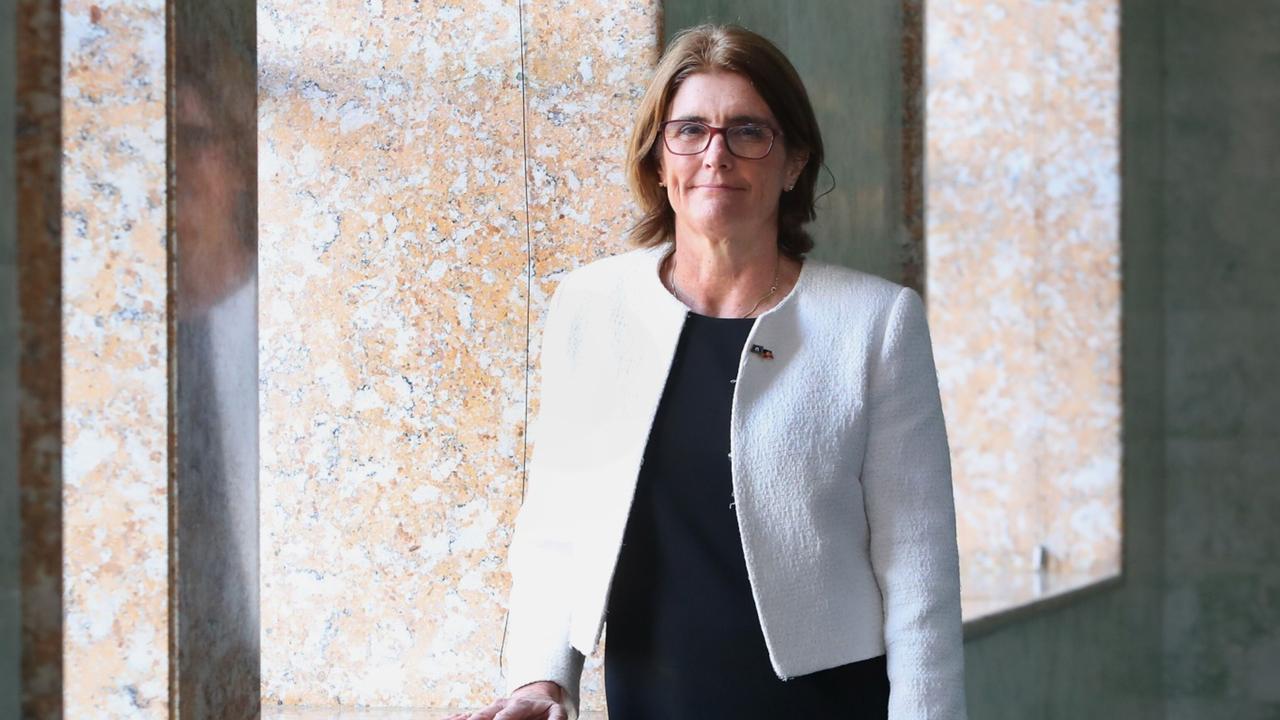Reserve Bank governor Michele Bullock isn’t ready to cut interest rates just yet.
But after the central bank’s aggressive campaign to quash demand and cool price pressures, delivering blow after blow to homeowners, the focus of economists and analysts has pivoted to the timing and speed of a rates reprieve.
The change follows the release of fresh inflation figures last week, that showed consumer prices growth cooled to a two-year low in the year to December of 4.1 per cent — all but guaranteeing the RBA’s aggressive run of rate hikes is over.
“Today’s CPI release seals the deal. The RBA will keep the cash rate on hold next week, and it is unlikely to raise rates further this cycle,” Westpac chief economist and former RBA assistant government Luci Ellis said on Thursday.
With further hikes effectively off the table, bond traders have now brought forward their bets that the RBA will cut rates from their current 12-year high of 4.35 per cent.
Money markets imply a 94 per cent chance of a cut at the central bank’s June’s meeting and are fully priced for a rate cut in August, with further easing in November.
Prior to the fresh inflation print, they were positioned for one cut only, in September, taking the cash rate to 4.1 per cent.
But could relief for borrowers, straining under the cost of high repayments, be coming even earlier?
Deutsche Bank economists now see a “conceivable” path that would allow the RBA to begin cuts to the cash rate at its May meeting.
Noting that trimmed mean inflation had slipped 1.3 percentage points in the previous two months of 2023, the bank said the RBA could cut as soon as May if this trend continued in January and February.
Trimmed mean inflation, the RBA’s preferred measure of underlying price pressures, strips out volatile goods like fuel and groceries.
“If that is repeated in the first two months of 2024, underlying inflation could already be back in the RBA’s target range,” Deutsche Bank’s Australian chief economist Phil O’Donaghoe said in a note to clients.
While inflation could tick higher again, Mr O’Donaghoe added he was very surprised at how quickly inflation had eased at the end of last year.
“Whatever caused it could well still be working its way through the economy,” he said.
Aside from Wednesday’s inflation data, which came in below what had been widely expected, the economy has exhibited recent signs of slowing under the weight of 13 rate hikes.
Indeed, fresh retail sales data revealed consumer spending over the usually popular Christmas sales period plunged as cost conscious shoppers held onto their savings.
Australia’s red hot jobs market has also begun to loosen considerably — shedding more than 65,000 positions in December, while job vacancies have dived from their record levels.
However, HSBC chief economist Paul Bloxham said while Australia’s economy was moving in the right direction, it was only doing so gradually.
“Inflation is still above the RBA’s two to three per cent target band — and well above its midpoint — and the unemployment rate is still below what we view as ‘full employment’,” Mr Bloxham said.
Rate cuts were still a “distant prospect”, Mr Bloxham added, with any relief for borrowers not on the cards until 2025.
“This is primarily driven by our view that we expect inflation to fall only slowly towards the midpoint of the RBA’s target band, as many of the still elevated components of inflation will prove to be sticky.”
Commonwealth Bank’s head of Australian economics Gareth Aird, who expects three rate cuts this year commencing from August, said despite the progress made in reducing inflation, the central bank was unlikely to indicate it was done with hikes at its February 6 meeting.
“The RBA has both dialled up and dialled down its inflation fighting rhetoric on several occasions over the past year,” Mr Aird said.
“Maintaining a tightening bias will signal to the fiscal authorities that it’s too early to declare the inflation fight over.”
But Mr Aird added there was a possibility the board could shift its language and jettison its call on the potential need for further rate hikes.
“If that were to be the case then it would signal the Board is closer to cutting the cash rate than we suspect they are,” he said.
Adding to the push for earlier rate cuts is the intervention by the Queensland, Victorian and West Australian premiers on Thursday who effectively attempted to jawbone the central bank into cutting rates at its February 6 meeting, a move that broke the longstanding convention that elected officials respect the body’s independence.
And with Ms Bullock facing questioning for the first time as governor in the post-decision press conference on Tuesday, she is bound to be asked about when household borrowers can catch a break.
